Honda HR-V vs Toyota RAV4 – Differences & prices compared
Compare performance, boot space, consumption and price in one view.
Find out now: which car is the better choice for you – Honda HR-V or Toyota RAV4?
The Honda HR-V (SUV) comes with a Full Hybrid engine and Automatic transmission. In comparison, the Toyota RAV4 (SUV) features a Full Hybrid or Plugin Hybrid engine with Automatic transmission.
When it comes to boot capacity, the Honda HR-V offers 319 L, while the Toyota RAV4 provides 580 L – depending on how much space you need. If you’re looking for more power, decide whether the 131 HP of the Honda HR-V or the 306 HP of the Toyota RAV4 suits your needs better.
In terms of consumption, the values are 5.40 L per 100 km for the Honda HR-V, and 1 L for the Toyota RAV4.
Price-wise, the Honda HR-V starts at 29700 £, while the Toyota RAV4 is available from 35100 £. Compare all the details and find out which model fits your lifestyle best!
In the competitive world of compact SUVs, the Honda HR-V and Toyota RAV4 stand out for their unique features and capabilities. The HR-V offers a more agile and fuel-efficient driving experience, ideal for urban environments, while the RAV4 impresses with its spacious interior and robust off-road capabilities. Ultimately, your choice will depend on whether you prioritize maneuverability and efficiency or a versatile, power-packed ride.
Honda HR-V
The Honda HR-V impresses with its sleek design, combining a dynamic exterior with a comfortable and spacious interior. This versatile compact SUV offers a smooth and responsive driving experience, making it ideal for both city commuting and weekend adventures. Equipped with advanced safety features and technology, the HR-V ensures a connected and secure journey for all passengers.
details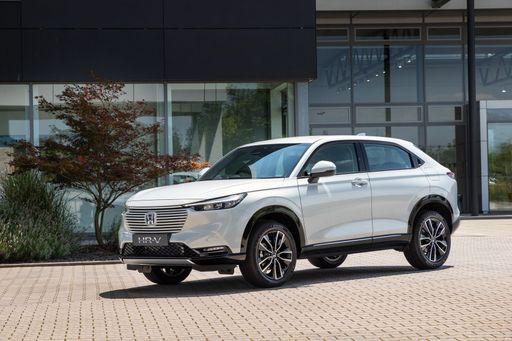 @ hondanews.eu
@ hondanews.eu
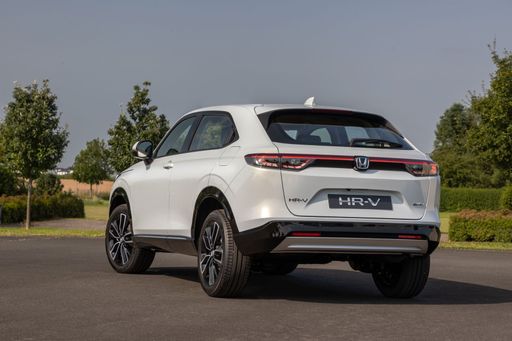 @ hondanews.eu
@ hondanews.eu
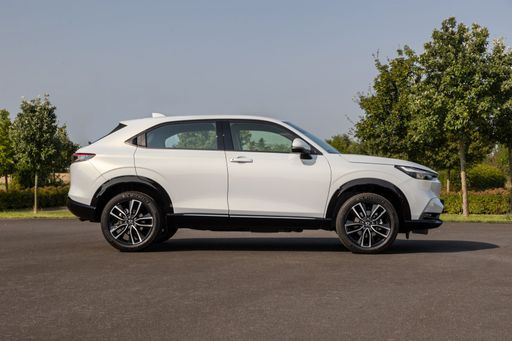 @ hondanews.eu
@ hondanews.eu
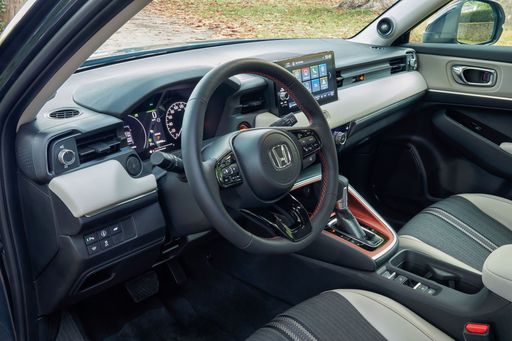 @ hondanews.eu
@ hondanews.eu
Toyota RAV4
The Toyota RAV4 stands out in the crowded SUV market with its distinct design, embodying a blend of robustness and style. Its cabin provides a harmonious fusion of comfort and practicality, offering plenty of space for both passengers and luggage. This vehicle is engineered to deliver a smooth driving experience, whether manoeuvring through city streets or exploring winding country roads.
details @ Toyota
@ Toyota
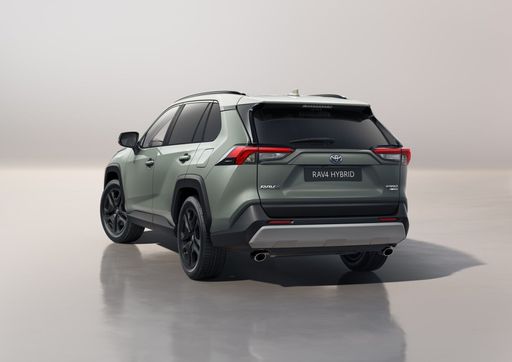 @ Toyota
@ Toyota
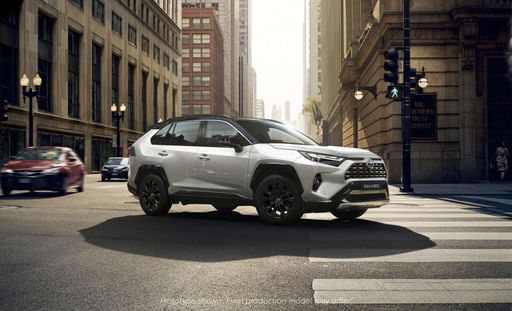 @ Toyota
@ Toyota
 @ Toyota
@ Toyota
Honda HR-V vs. Toyota RAV4: A Comprehensive Comparison
In the competitive landscape of compact SUVs, the Honda HR-V and the Toyota RAV4 stand out as two popular choices among consumers. Both vehicles offer a blend of practicality, efficiency, and technological advancements. This article delves into their technical aspects and innovations, helping you decide which model suits your needs best.
Engine and Performance
The Honda HR-V comes equipped with a 1.5L full hybrid engine that produces 130 HP and 253 Nm of torque, delivering a respectable acceleration of 0-100 km/h in approximately 10.7 seconds. Its continuously variable transmission (CVT) ensures a smooth driving experience with a front-wheel drive setup. The HR-V’s powertrain boasts a fuel consumption of just 5.4 L/100 km and CO2 emissions of 122 g/km, classifying it as a CO2 efficiency class D vehicle.
On the other hand, the Toyota RAV4 offers multiple powertrain options, including full hybrid and plug-in hybrid variants. The standard hybrid engine delivers an impressive 218 HP and allows for even quicker acceleration, with a 0-100 km/h time of just 8.4 seconds. The most powerful plug-in hybrid version makes 306 HP, propelling it from 0-100 km/h in a mere 6 seconds. The RAV4's hybrid model achieves a fuel consumption of 5.6 L/100 km, combined with CO2 emissions ranging from 126 to 128 g/km, with its CO2 efficiency class generally rated higher than the HR-V.
Dimensions and Practicality
When it comes to size, the RAV4 is the larger of the two vehicles, measuring 4600 mm in length, 1855 mm in width, and 1685 mm in height, compared to the HR-V's 4340 mm length and 1582 mm height. This size advantage translates into superior trunk capacity, as the RAV4 provides 580 liters of storage space, substantially more than the HR-V's 335 liters. However, the HR-V compensates with a slightly lighter curb weight of 1452 kg versus 1745 kg for the standard RAV4, enhancing its agility.
Interior and Technology
Both SUVs offer a comfortable seating capacity for five passengers, but the HR-V's interior is designed with a focus on versatility. Its Magic Seat feature allows for multiple configurations, catering to different cargo needs. This innovation, combined with an accessible infotainment system, makes the HR-V highly appealing for families and urban dwellers alike.
The Toyota RAV4, renowned for its robust build quality, provides a more upscale and feature-rich cabin. With a modern infotainment system that offers advanced connectivity options including Apple CarPlay and Android Auto, the RAV4 caters to tech-savvy consumers. Additionally, it features a host of safety technologies, such as Toyota Safety Sense, which includes adaptive cruise control, lane departure warning, and more.
Driving Experience and Feedback
Driving the HR-V offers a balanced experience, ideal for city commuting and light off-roading. Its hybrid engine delivers a quiet operation, resulting in a serene ride. The RAV4 is designed for those who appreciate a more dynamic driving experience, with a slightly sportier suspension setup and responsive steering that enhances handling around corners, making it feel more like an SUV when pushing limits.
Conclusion
In conclusion, the choice between the Honda HR-V and the Toyota RAV4 boils down to individual preferences and driving needs. The HR-V excels in practicality and maneuverability, making it an excellent urban vehicle. In contrast, the RAV4 shines with its strong performance, versatility, and larger interior space, suitable for those who prioritize power and advanced features. Both models continue to reflect the innovations and commitments of their respective brands toward meeting modern drivers' demands.

|

|
|
|
|
Costs and Consumption |
|
|---|---|
|
Price
29700 - 35400 £
|
Price
35100 - 55700 £
|
|
Consumption L/100km
5.40 L
|
Consumption L/100km
1 - 5.6 L
|
|
Consumption kWh/100km
-
|
Consumption kWh/100km
-
|
|
Electric Range
-
|
Electric Range
75 km
|
|
Battery Capacity
-
|
Battery Capacity
-
|
|
co2
122 g/km
|
co2
22 - 128 g/km
|
|
Fuel tank capacity
40 L
|
Fuel tank capacity
55 L
|
Dimensions and Body |
|
|---|---|
|
Body Type
SUV
|
Body Type
SUV
|
|
Seats
5
|
Seats
5
|
|
Doors
5
|
Doors
5
|
|
Curb weight
1452 kg
|
Curb weight
1745 - 1910 kg
|
|
Trunk capacity
319 L
|
Trunk capacity
520 - 580 L
|
|
Length
4355 mm
|
Length
4600 mm
|
|
Width
-
|
Width
1855 mm
|
|
Height
1582 mm
|
Height
1685 mm
|
|
Payload
418 kg
|
Payload
390 - 600 kg
|
Engine and Performance |
|
|---|---|
|
Engine Type
Full Hybrid
|
Engine Type
Full Hybrid, Plugin Hybrid
|
|
Transmission
Automatic
|
Transmission
Automatic
|
|
Transmission Detail
-
|
Transmission Detail
CVT
|
|
Drive Type
Front-Wheel Drive
|
Drive Type
Front-Wheel Drive, All-Wheel Drive
|
|
Power HP
131 HP
|
Power HP
218 - 306 HP
|
|
Acceleration 0-100km/h
10.6 - 10.8 s
|
Acceleration 0-100km/h
6 - 8.4 s
|
|
Max Speed
170 km/h
|
Max Speed
180 km/h
|
|
Torque
253 Nm
|
Torque
-
|
|
Number of Cylinders
4
|
Number of Cylinders
4
|
|
Power kW
96 kW
|
Power kW
160 - 225 kW
|
|
Engine capacity
1498 cm3
|
Engine capacity
2487 cm3
|
General |
|
|---|---|
|
Model Year
2025
|
Model Year
2024 - 2025
|
|
CO2 Efficiency Class
D
|
CO2 Efficiency Class
D, B
|
|
Brand
Honda
|
Brand
Toyota
|
Honda HR-V
Exploring the Honda HR-V: A Testament to Innovation
The Honda HR-V epitomises the harmonious blend of SUV practicality and hybrid innovation. This remarkable model offers a compelling choice for those seeking a vehicle that is as environmentally conscious as it is versatile. Let's delve into the technical prowess and innovative features that make the HR-V a standout in its class.
Powerful Yet Efficient Hybrid Technology
At the heart of the Honda HR-V is its 1.5 i-MMD e:HEV full-hybrid powertrain. This advanced system delivers a robust 130 PS (96 kW) while maintaining an impressive fuel consumption of just 5.4 L/100km. The HR-V achieves this through its continuously variable transmission (CVT), which optimises efficiency by adjusting seamlessly to driving conditions. The combination results in a smooth yet responsive drive, marking a significant achievement in hybrid technology.
Design and Practicality
The HR-V seamlessly blends elegant design with practical functionality. Measuring 4340 mm in length and 1582 mm in height, it provides ample cabin space while maintaining a compact footprint. Inside, the HR-V comfortably seats five passengers, ensuring a pleasant journey for both driver and passengers. The boot space, ranging from 320 to 335 litres, offers flexibility for various cargo needs.
Performance and Responsive Handling
With a maximum torque of 253 Nm, the HR-V delivers remarkable performance. Its front-wheel-drive system paired with a CVT offers a refined driving experience. The model is capable of accelerating from 0 to 100 km/h in a respectable 10.6 to 10.7 seconds, and can reach a maximum speed of 170 km/h. Despite its performance capabilities, the HR-V remains an eco-conscious choice with CO2 emissions of 122 g/km.
Comfort and Sophisticated Interiors
The Honda HR-V is available in three distinct trims - Advance e-CVT, Advance Style e-CVT, and Elegance e-CVT, each offering a host of features to enhance comfort and convenience. From the quality of materials to the thoughtful layout of controls, every aspect of the HR-V’s interior is designed to offer a superior driving experience. Furthermore, its fuel tank capacity of 40 litres ensures you'll spend more time on the road and less at the pump.
Cost Efficiency and Environmental Consideration
Beyond its technical specifications, the Honda HR-V promises efficient running costs. The estimated monthly cost ranges from €1002 to €1064, with the cost per kilometre ranging between 40.1 to 42.6 cents. This makes it not only an environmentally friendly choice but an economically sensible one as well, especially for those cognisant of their carbon footprint. It carries a CO2 efficiency class of D, affirming its commitment to reduced emissions.
Final Thoughts
The Honda HR-V stands as a testament to how modern SUVs can be both innovative and practical. Its combination of hybrid technology, responsive power, and thoughtful functionality make it a compelling choice for those in search of sustainability without compromising on performance or comfort. As Honda continues to push the boundaries of what's possible, the HR-V ensures you are at the forefront of automotive innovation.
Toyota RAV4
The Toyota RAV4: A Modern Marvel in the SUV Segment
The Toyota RAV4 has long been a staple in the SUV market, renowned for its reliable performance and innovative design. In the latest iterations, Toyota continues to build on this legacy by integrating advanced technology and superior engineering.
Hybrid Excellence: Under the Hood
The latest RAV4 models are equipped with impressive hybrid engines, offering both full-hybrid and plug-in hybrid options. The performance spectrum ranges from 218 to a staggering 306 PS, providing power without compromising efficiency. These engines are paired with a responsive CVT automatic transmission, delivering a smooth driving experience.
The hybrid variants achieve remarkable fuel efficiency, with consumption rates as low as 1.0 to 5.6 litres per 100 kilometres, depending on the model. Additionally, the plug-in hybrid versions boast an impressive electric-only range of up to 75 kilometres.
Performance Meets Practicality
The Toyota RAV4 is not just about power; it also offers practical features that enhance the driving experience. With a top speed of up to 180 km/h and a rapid acceleration capability of 0-100 km/h in just 6 to 8.4 seconds, it combines the thrill of driving with everyday usability.
The spacious interior comfortably seats five, with a generous boot capacity ranging from 520 to 580 litres, making it ideal for family adventures or long road trips.
Innovative Driving Dynamics
One of the RAV4's standout features is its driving dynamics. Available in both front-wheel and all-wheel drive, the all-wheel drive variants, branded as AWD-i, offer enhanced traction and stability, providing peace of mind in various driving conditions.
Furthermore, Toyota has ensured that the RAV4 caters to diverse tastes and preferences, with several trim levels like the Adventure AWD-i, Business Edition, and the sporty GR SPORT AWD-i, offering unique features and styling options.
Eco-Friendly and Cost Effective
Environmental considerations are central to the RAV4 design philosophy. The model range adheres to strict CO2 emission standards, rated between 22 and 128 g/km, placing it in the B to D CO2 efficiency classes.
Moreover, the running costs of the RAV4 reflect its excellent efficiency, with monthly expenses ranging from €1,068 to €1,315, and cost per kilometre between 42.7 and 52.6 cents, making it a sensible choice for eco-conscious drivers.
Conclusion: The RAV4's Unmatched Appeal
Whether you're a city driver or an adventure seeker, the Toyota RAV4 offers a perfect blend of power, efficiency, and practicality. Its state-of-the-art hybrid technology, coupled with its versatile features, truly sets it apart in the competitive SUV market. With the Toyota RAV4, drivers experience the best of both worlds: exceptional performance and eco-friendly innovation.
Which drive types are available for the Honda HR-V?
Available as Front-Wheel Drive.
The prices and data displayed are estimates based on German list prices and may vary by country. This information is not legally binding.
